A Guide To Paving Problems & How To Solve Them
Many paving and patio issues are caused by naturally occurring phenomenon, which will improve with time, or incorrect installation and care. Before anything can be done about a problem patio the issue must first be identified. In this guide we discuss common paving issues, and where possible, offer solutions.
Topics covered
- Void bedding
- Upside down installation
- Colour variation between paving packs
- Spalling & butt jointing
- Shaling & delamination
- Granite veining
- Differential weathering
- Efflorescence
- Rock salt damage
- Staining
Void bedding

All paving slabs, regardless of materials, should be laid on a full bed of mortar. Under no circumstances should paving slabs be void bedded. Void bedding, also referred to as “dot & dab” or “the 5-spot method”, leaves gaps under the paving slabs and does not fully support them. Void bedding may cause these common issues:
- Paving can appear stained due to the spots of mortar drawing water from flooded voids up into the body of the slabs.
- Voids below the slab fill with water and with time this can damage the sub-base and mortar causing subsidence and instability. Water trapped in voids can also freeze and expand, breaking the mortar joints and loosening the paving.
- Paving slabs can crack because they are not fully supported.
- Voids below the slabs provide the perfect breading ground for insects such as ants and they can be difficult to remove.
Problems associated with void bedded paving slabs is not a product fault, it is and installation problem and the responsibility of the installer.
Upside down installation
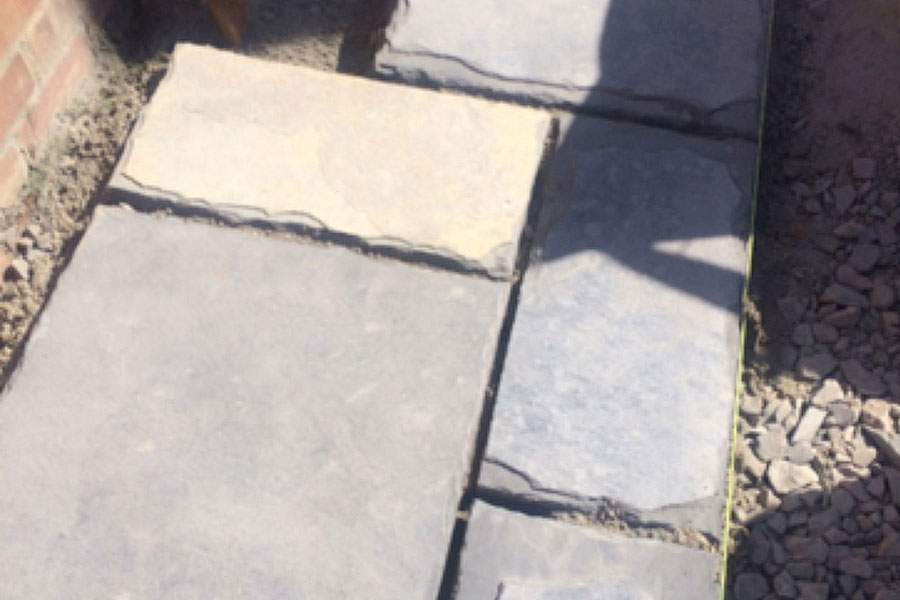
It is important to lay paving slabs with the correct surface facing upwards. For concrete slabs, identifying the flat unfinished underside should easy but for natural stone slabs this can be more difficult.

As a rule, natural stone slabs should be laid with the chamfered edges facing down and concrete slabs should be laid with the chamfers facing up. Laying paving slabs upside down can cause the following problems.
- Paving can look unsightly. The underside of natural paving will not be finished to the same standard as the top surface and can be heavily riven with lumps and bumps. It may also have inconsistent colouring.
- The joint between the paving slabs is too wide and the pointing is unsightly. Over time the pointing will often loosen break up.
The only way to correct the issue is to remove the paving and reinstall it the correct way up and this may require the paving slabs to be replaced.
Colour variation between paving packs
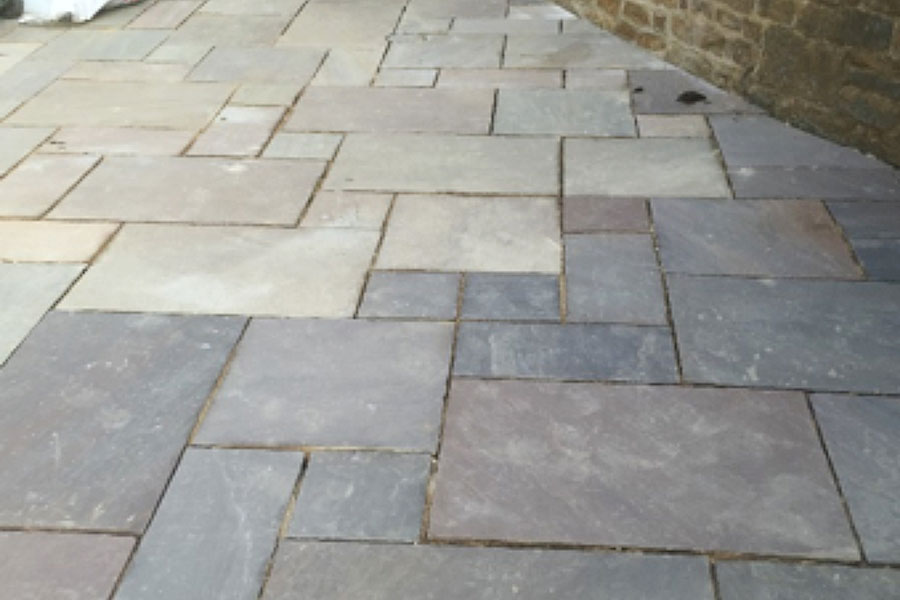
Slight colour variation between batches of paving slabs is normal, particularly for natural stone paving but this can also be the case for manmade concrete paving. This is not an issue for small patios where a single paving pack is used but for larger patios, requiring two or more paving packs, it is important to mix the packs before laying. Failure to do so can result in differences in colour and shading between adjoining sections of paving.
Spalling and butt jointing

Paving slabs, regardless of the material, should be installed with a gap between each slab. Paving slabs should not butt up against each other, this does not allow the slabs to expand and contract with changes in temperature, and it will not be possible to point the slabs correctly. Common issues associated with butt jointing include:
- Without a sufficient gap between paving slabs the edges can impact against each other as they expand and contract slightly with changes in temperature. This can cause the edges of the paving slabs to break up, the issue is also referred to as ‘spalling’ or ‘shaling’.
- All paving is cut to size with a small tolerance and the dimensions of each can differ by a few millimetres. Butt jointing does not allow for these small tolerances, commonly causing alignment and laying pattern issues.
It is recommended that paving slabs should be laid with a minimum 2mm gap between each slab and joints should be filled with a suitable jointing compound. This creates a neat joint and allows for expansion and size tolerance between paving slabs. Problems associated with spalling and butt jointing are due to incorrect installation and the only way to rectify the issue is to take up the paving and reinstall or replace it.
Shaling & delamination
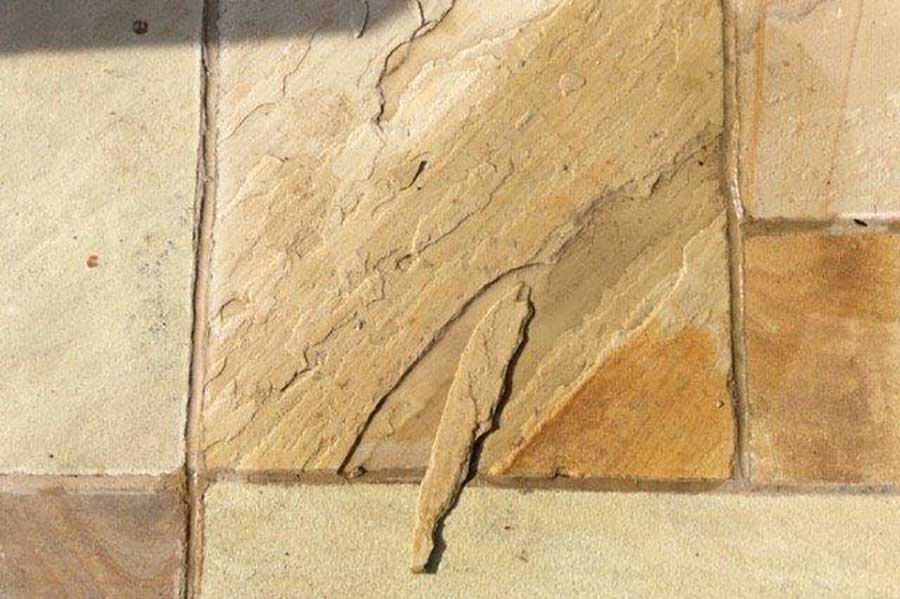
Delamination and shaling can affect the riven surface of some types of sedimentary natural paving slabs such as limestone, sandstone and slate. Sedimentary stones are formed by layers of sediment and stones becoming compacted over thousands of years. Occasionally the layers can naturally delaminate, referred to as ‘sheeting-off’, and this can happen before or after the paving has been installed. Delamination, also known as ‘shaling’, is a natural phenomenon and not an issue with the paving slab. Invariably, a small section of the riven surface will break away but the surface below with be stable and no further issues will occur. It should be noted that aggressive cleaning and high pressure jet washing can exasperate the issue, read our patio care and cleaning guide for more information.
Granite veining
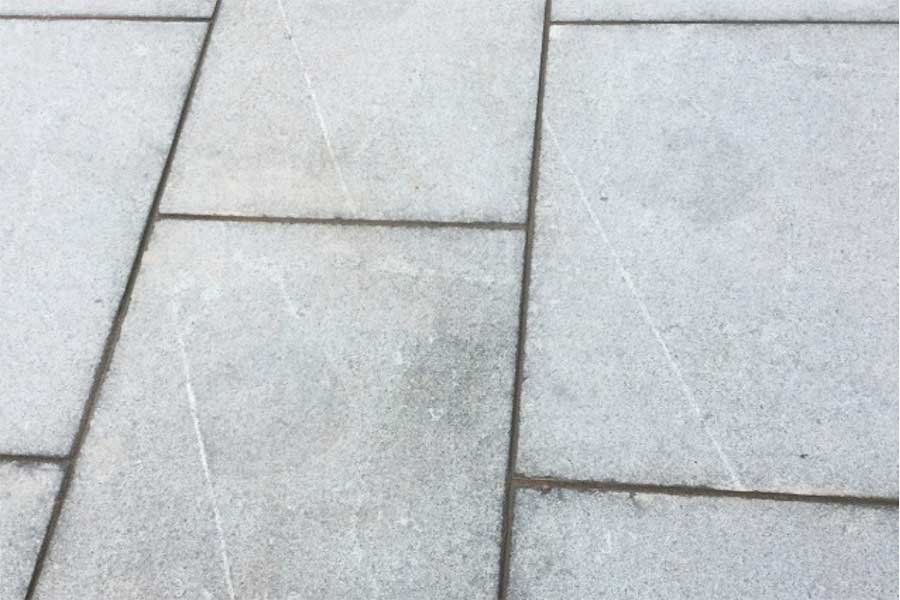
Granite veining takes the form of fine lines visible in the surface of the paving stone. This is not a fault with the paving but simply a natural phenomenon and part of the character of granite paving. When laying granite paving, it is advisable to check the slabs for veining and mix them up to avoid pattern repetition.
Differential weathering
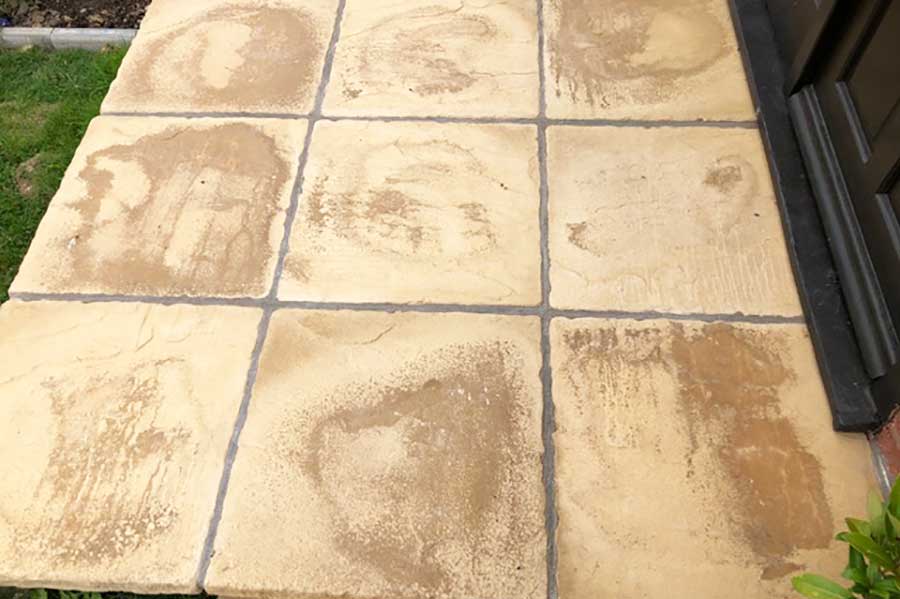
Differential weathering refers to damp or dark patches on new and recently laid paving. New manmade paving can exhibit darker patches while the paving is still curing or drying out. The phenomenon can also bee seen on newly laid concrete and natural stone paving as moisture in the slabs and mortar bed below is drawn to the surface. Atmospheric conditions can exacerbate the issue and plastic packaging can cause new paving slabs to sweat. Differential weathering is simply part of natural drying out process, it is not detrimental to the paving slabs in will normally reduce with time and natural weathering.
Efflorescence
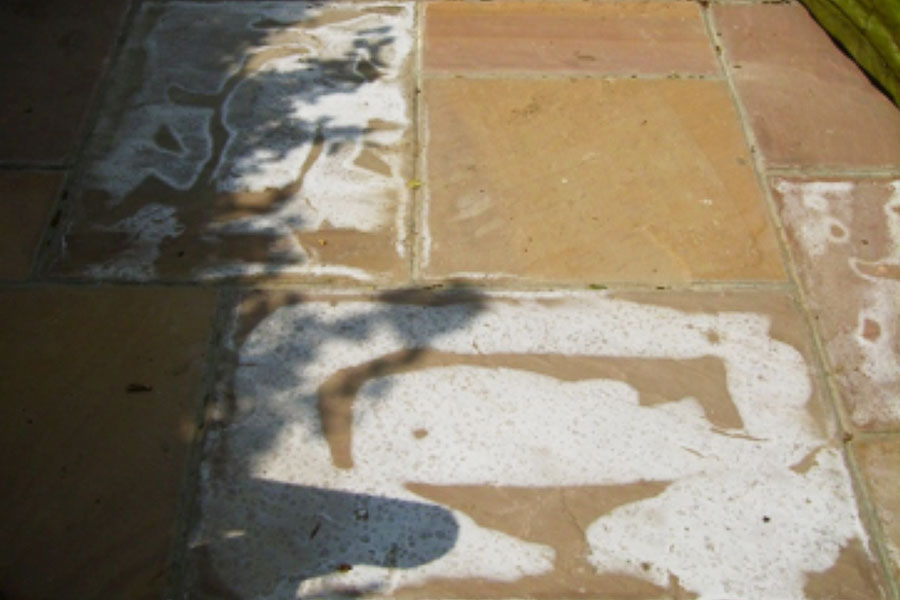
Efflorescence, also known as ‘lime blooming’, affects concrete paving and is caused by the reaction between cement and water, seen as darker circular spots on the paving. The phenomenon has a similar appearance to ‘void bedding’ but it is not caused be incorrect installation. Efflorescence is a natural phenomenon and not an issue with the paving slabs. Cleaning chemicals are available, however spots can return but the effect will generally lessen and disappear with age and weathering in.
Rock salt damage
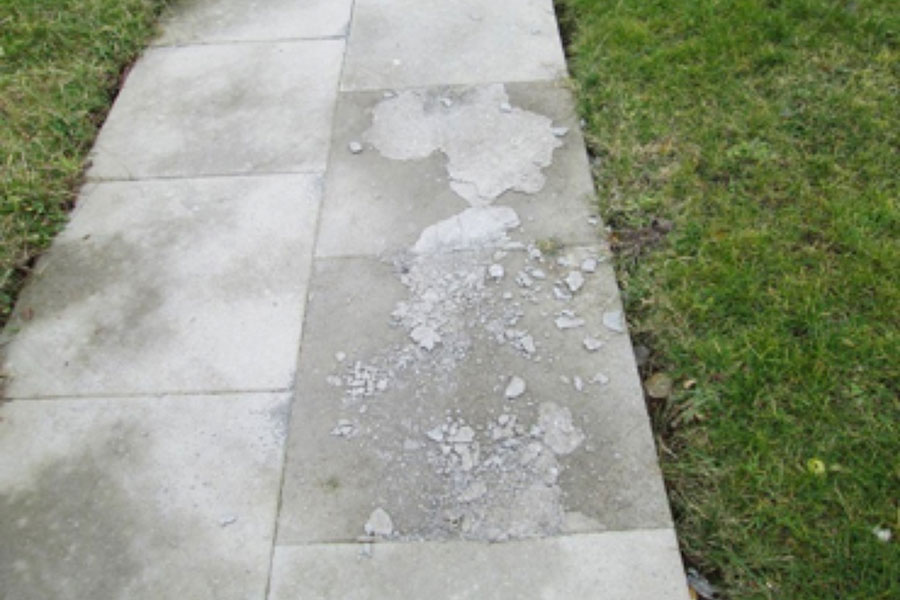
Rock salt is corrosive and can damage both natural stone and concrete paving slabs, causing the surface to break up. Concrete paving is particularly vulnerable to the corrosive effects of rock salt and most paving manufacturers warn against the use of rock salt. Unfortunately, corrosion caused by rock salt is irreparable, but the damage should not worsen if no more rock salt is used.
Stains, dirt and marks
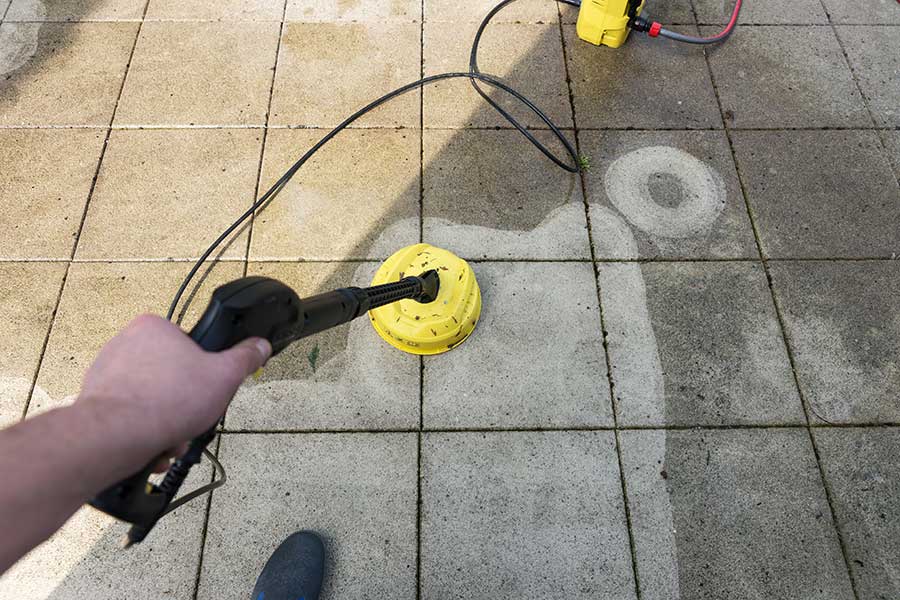
It is normal for natural stone and concrete paving to become stained over time. For advice on the best methods for removing dirt and stains from paving, including information regarding appropriate cleaning products, please refer to our “how to clean paving and patios” guide
Download a copy of the AWBS Common Paving Issues Guide
Download a pdf copy of our comprehensive common paving issues guide here


